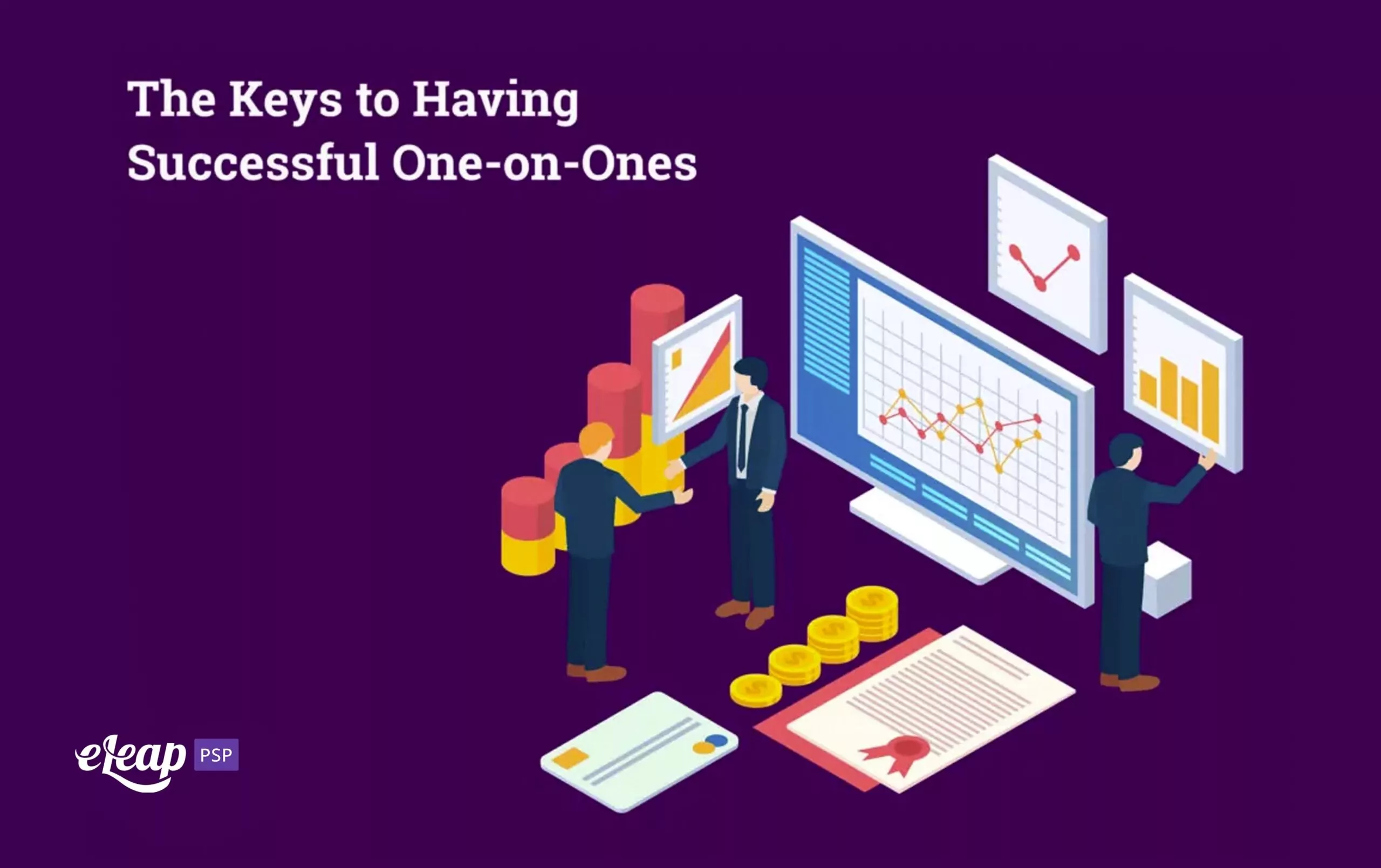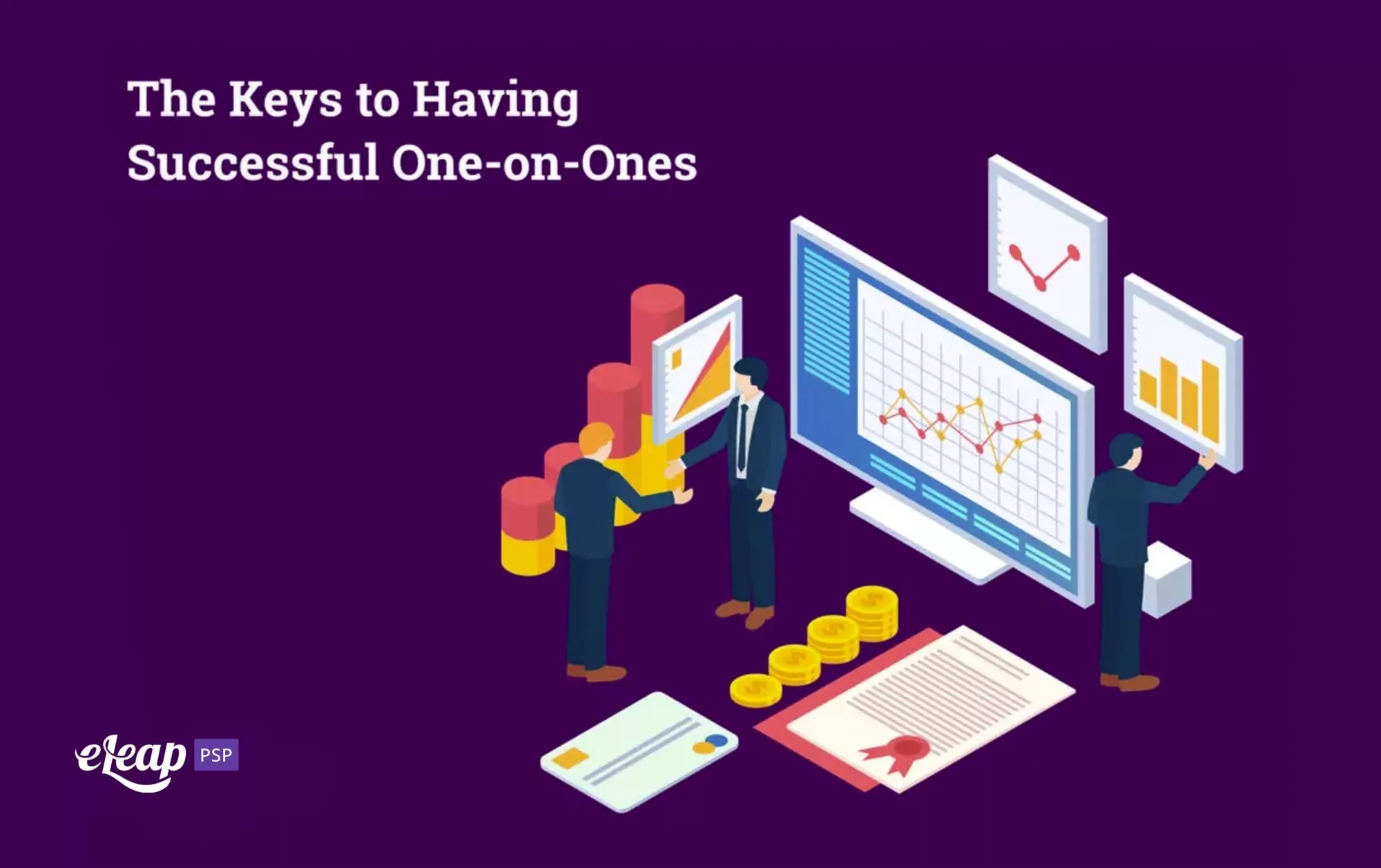The Keys to Having Successful One-on-Ones

Managing employee performance has never been more critical. And yet, it has also never been more challenging. That’s particularly true for those organizations still stuck with annual performance reviews. However, even forward-thinking organizations that now follow the check-in and one-on-one performance management model can find it challenging.
The key here is to realize that one-on-ones can be amazingly effective, but if yours are hurried, transactional, or focused solely on business objectives, they’re going to fall flat on their face. Why is that? Simply put, employees engaged in one-on-one meetings in the right way are three times more likely to be engaged at work, but those meetings must be transformational, not transactional, tactical, or time-bound.
With the right focus, your meetings can boost performance, increase customer service and satisfaction, ensure better engagement from employees, and more. Of course, this begs the question – how do you have successful one-on-one meetings in the first place? Below, we’ll explore some of the key steps.

Do Your Due Diligence
One reason that so many one-on-one meetings fail to hit the mark is that managers fail to prepare properly. What does that mean, though? Can’t you just go in, meet, discuss goals, and be done? Simply put – no, you can’t.
If you want those meetings to be successful and to be transformational, you must do your due diligence. Comb through your notes from previous one-on-ones with the employee. Consider past action items, past successes, and previous hurdles the employee had to overcome, whether in their professional life or their personal one.
You also need to know what it is about this employee that makes them so integral to the company. No one is “just a cog in the machine” – everyone has some quality, experience, ability, insight, or strength that makes them unique. Define it for each one-on-one so that it can form the foundation of all your feedback and discussions.
Finally, make sure you know the person you’re meeting. Not just their name, their position within the company, or their past performance. Really get to know them. What do they want to achieve in their position? What about their career goals and aspirations? Put yourself in their shoes (be empathetic) and allow this to help set the agenda for the meeting.
Be There Yourself
We’ve all experienced it from time to time. We’re in the middle of doing something, possibly something important, and our minds wander. We’re not present.
You cannot achieve success in anything if you’re not present, and that certainly includes one-on-one meetings if you’re just going through the motions, which will come across to the other person. They know you’re not invested, not really there, and it shows that they are not a priority.
The message you ultimately send is that there is something more pressing, more important, than the employee. That’s not what you want to communicate.
Instead, practice being there fully and completely. Before going into the meeting, take a few moments to collect your thoughts. Consider meditating for one to two minutes and focusing on your breathing to ground you in the present moment. Commit to being here now.
Get Out of the Negative Rut
One reason that annual performance reviews never really worked (besides being completely backward-facing) is that they were often negative. They focused on what employees did wrong, usually to the exclusion of all else. If you only focus on the bad, on mistakes the employee made or missteps they took, your meetings will quickly become demoralizing and demotivating.
Instead, pepper your discussion with positive things. Celebrate their successes. Show appreciation for what they do day in and day out. Tell them thank you for everything they do. An employee who feels truly appreciated is motivated to do more every single day. They’re also more open to constructive criticism, so when you do touch on areas where improvement is needed, they see these as opportunities for growth rather than being censured for mistakes.
Ask Questions
A key concept to embrace here is that you’re having a conversation with the employee. It’s not a one-way discourse. To encourage a two-way flow of information, you need to focus on asking the right questions.
When you ask questions, you’re able to base the conversation on the employee’s answers. What questions should you ask, though? They can run the gamut from things like “how are you doing” to “do you have the right tools and resources to achieve your goals.”
The right questions should help you achieve key goals here. They should spur innovation. They should lead to learning and clarity. They should also result in performance improvements or at least provide insight that helps spur those improvements.
Provide the Help They Need
As a manager, your job entails more than simply making sure that each employee is upholding their end of the employment contract and doing their duty. You need to make sure that they can do their jobs and do them well. It’s not always clear to managers what employees need to learn and develop, though.
Use one-on-ones as your opportunity to come right out and ask them. “What can I do to help?” or “What can I do to ensure you have the tools and resources necessary?” can be powerful tools that unlock better performance plus professional development for your team members.
Just remember that you need to offer a helping hand and that your offer to help needs to be genuine. Show empathy and compassion and that you value the employee, and they’ll respond with improved performance.
Don’t Leave It Hanging
Too often, managers assume that once something has been covered in a one-on-one, it’s over and done. That’s not the case. You need to follow up and close the loop.
How, though? Make any outputs of a one-on-one part of the next meeting. Check on progress toward goals, or ask whether the resources provided were sufficient. Come back to the topic in a way that’s helpful to the other person.
One-on-ones can be incredible tools that foster better teamwork and ensure professional development across entire organizations. They must be used correctly, though, or you’re wasting the opportunity to improve performance.